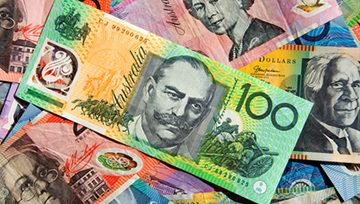Talking Points:
- The Australian labor market made forecasters look silly in August
- 54,00 new jobs were created, more than double expectations
- Tellingly, the vast majority were full-time positions
See what retail investors make of the Australian Dollar right now at the DailyFX Sentiment Page
The Australian Dollar surged Thursday on a blockbuster official employment report from its home country which shredded market expectations.
The economy added 54,200 jobs in August, it showed. Forecasters had been looking for a 20,000 rise to follow July’s 27,900, but even the most optimistic calls fell far short of the mark. Full-time employment soared by 40,000 with part-time jobs up by 14,100. The unemployment rate remained steady at 5.6%.
Australia has become something of a job-creation machine in the past year. This is the eleventh straight run of overall employment gains and the highest monthly rise since late 2015. AUD/USD gained smartly on the result. It may well increase speculation that record-low Australian interest rates may have to rise sooner than the end of 2018, which is when futures markets currently suspect that a move will come.

The Australian Dollar had taken a modest beating recently at the hands of a generally resurgent greenback this week. However, it remains very close to two-year highs, a position with which the RBA has repeatedly said it is uncomfortable. The central bank believes that excessive currency strength hampers its ability to adjust inflation but has more recently started to worry about its effects on the competitiveness of Australian goods in export markets and, thereby, overall growth.
AUDUSD has slipped back, but remains well within the broad trading range which has contained trading action mid-July.

RBA monetary policy member Ian Harper said this week that domestic growth remained too weak for a near term intertest rate rise, a change of tack from Governor Philip Lowe who generally frets households’ enormous debts as a reason to hold off.
He also appeared to pour cold water on any prospect of the RBA intervening in the foreign exchange market, despite its currency’s unwanted altitude, in an environment where the US Dollar is making all the running.
“What are you going to do? Try and influence the US Dollar? Give me a break,” he reportedly said Wednesday in response to questions.
--- Written by David Cottle, DailyFX Research
Contact and follow David on Twitter: @DavidCottleFX




